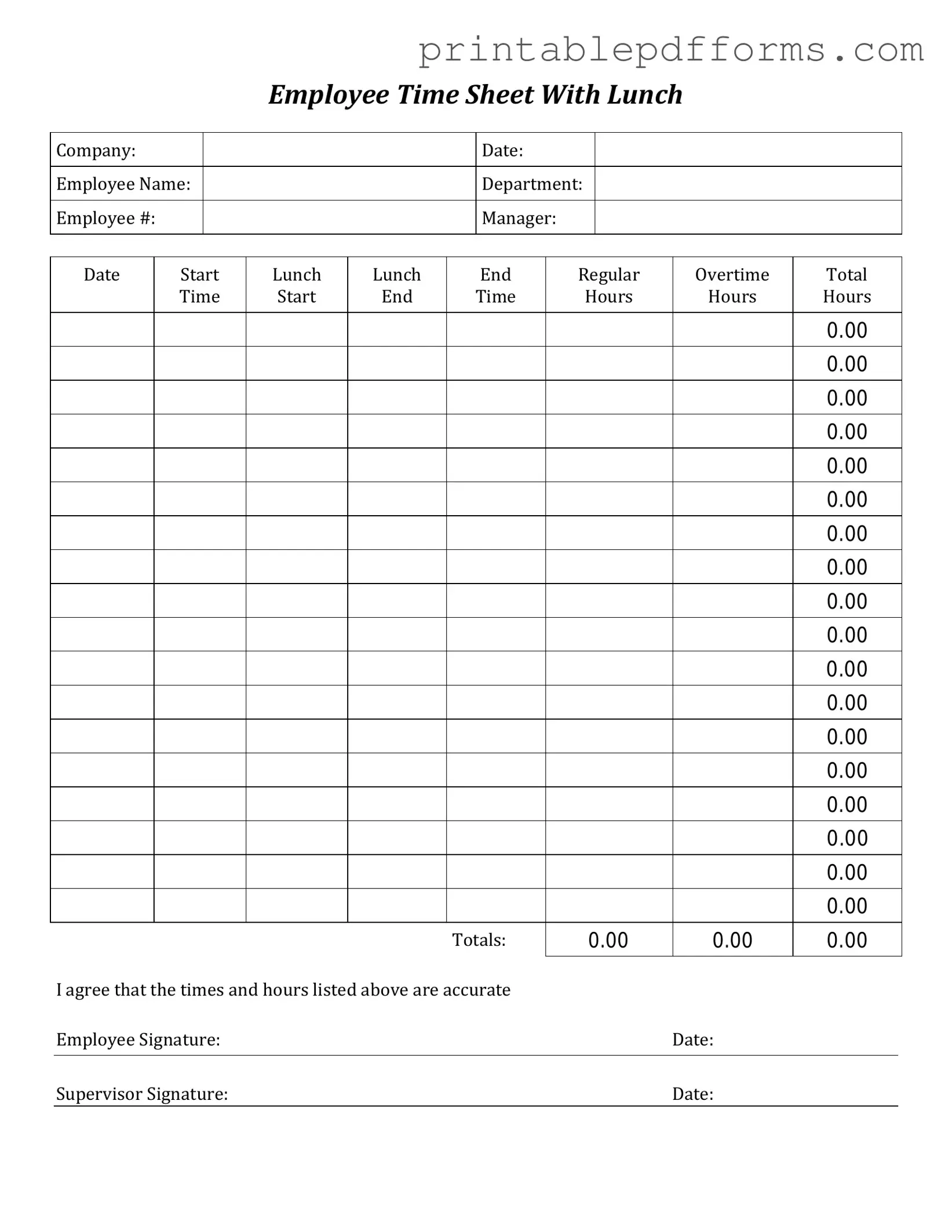A Time Card form is a document used by employees to record the hours they have worked during a specific pay period. It helps ensure accurate payment for hours worked, including regular hours, overtime, and any leave taken. The form typically includes sections for the date, start and end times, breaks, and total hours worked.
Filling out a Time Card form accurately is crucial for proper payroll processing. Here are some steps to follow:
-
Enter your name and employee ID at the top of the form.
-
Record the date for each day you worked.
-
Indicate your start and end times for each workday.
-
Document any breaks taken during your shifts.
-
Calculate the total hours worked for each day.
-
Summarize your total hours at the end of the pay period.
Double-check your entries for accuracy before submitting the form.
What should I do if I made a mistake on my Time Card?
If you notice an error on your Time Card after submitting it, don’t panic. Here’s what you can do:
-
Contact your supervisor or the payroll department as soon as possible.
-
Provide them with the correct information and explain the mistake.
-
Follow any specific procedures they have for correcting Time Card entries.
It’s important to address mistakes quickly to ensure you receive the correct pay.
What happens if I forget to submit my Time Card?
Forgetting to submit your Time Card can lead to delays in your paycheck. If this occurs, take immediate action:
-
Submit your Time Card as soon as you remember.
-
Notify your supervisor about the oversight.
-
Check if there are any deadlines for submission to avoid further issues.
Timely communication can help mitigate any potential problems with your pay.
Can I use a digital Time Card instead of a paper one?
Many companies now offer digital Time Card options. If your employer allows it, you may be able to use an online system or app to track your hours. Digital Time Cards often provide benefits such as:
-
Automatic calculations of hours worked.
-
Easier tracking of overtime and breaks.
-
Immediate submission to payroll.
Check with your employer to see if this option is available to you.
How is my Time Card used in the payroll process?
Your Time Card is a vital component of the payroll process. Once submitted, it goes through several steps:
-
Your supervisor reviews and approves the recorded hours.
-
The payroll department processes the approved Time Cards.
-
Your hours are then calculated to determine your pay for the period.
Accurate completion of your Time Card helps ensure that you are paid correctly and on time.

